
The Missouri River is a river in the Central and Mountain West regions of the United States. The nation's longest, it rises in the eastern Centennial Mountains of the Bitterroot Range of the Rocky Mountains of southwestern Montana, then flows east and south for 2,341 miles (3,767 km) before entering the Mississippi River north of St. Louis, Missouri. The river drains semi-arid watershed of more than 500,000 square miles (1,300,000 km2), which includes parts of ten U.S. states and two Canadian provinces. Although a tributary of the Mississippi, the Missouri River is slightly longer and carries a comparable volume of water. When combined with the lower Mississippi River, it forms the world's fourth-longest river system.
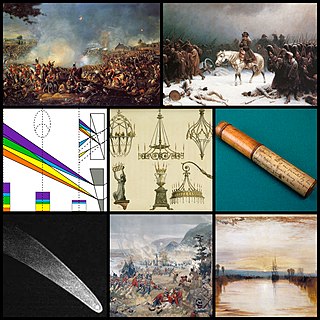
The 1810s was a decade of the Gregorian calendar that began on January 1, 1810, and ended on December 31, 1819.

Stephen Harriman Long was an American army civil engineer, explorer, and inventor. As an inventor, he is noted for his developments in the design of steam locomotives. He was also one of the most prolific explorers of the early 1800s, although his career as an explorer was relatively short-lived. He covered over 26,000 miles in five expeditions, including a scientific expedition in the Great Plains area, which he famously confirmed as a "Great Desert".

Fort Atkinson was the first United States Army post to be established west of the Missouri River in the unorganized region of the Louisiana Purchase of the United States. Located just east of present-day Fort Calhoun, Nebraska, the fort was erected in 1819 and abandoned in 1827. The site is now known as Fort Atkinson State Historical Park and is a National Historic Landmark. A replica fort was constructed by the state at the site during the 1980s–1990s.
Fort Lisa (1812–1823) was established in 1812 in what is now North Omaha in Omaha, Nebraska by famed fur trader Manuel Lisa and the Missouri Fur Company, which was based in Saint Louis. The fort was associated with several firsts in Nebraska history: Lisa was the first European farmer in Nebraska; it was the first settlement by American citizens set up in the then-recent Louisiana Purchase; Lisa's wife was the first woman resident of European descent in Nebraska; and the first steamboat to navigate Nebraska waters, the Western Engineer, arrived at Fort Lisa in September 1819.

The steamboat Enterprise demonstrated for the first time by her epic 2,200-mile (3,500 km) voyage from New Orleans to Brownsville, Pennsylvania, that steamboat commerce was practical on the Mississippi River and its tributaries.
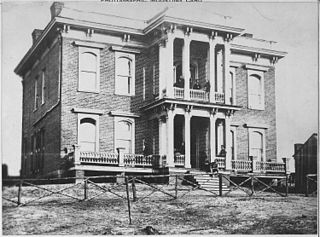
The U.S. Army Corps of Topographical Engineers was a branch of the United States Army authorized on 4 July 1838. It consisted only of officers who were handpicked from West Point and was used for mapping and the design and construction of federal civil works such as lighthouses and other coastal fortifications and navigational routes. Members included such officers as George Meade, John C. Frémont, Thomas J. Cram and Stephen Long. It was merged with the United States Army Corps of Engineers on 31 March 1863, at which point the Corps of Engineers also assumed the Lakes Survey for the Great Lakes. In the mid-19th century, Corps of Engineers' officers ran Lighthouse Districts in tandem with U.S. Naval officers.

New Orleans was the first steamboat on the western waters of the United States. Her 1811–1812 voyage from Pittsburgh, Pennsylvania, to New Orleans, Louisiana, on the Ohio and Mississippi rivers ushered in the era of commercial steamboat navigation on the western and mid-western continental rivers.
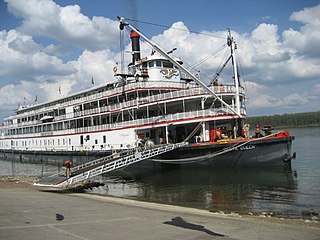
Steamboats played a major role in the 19th-century development of the Mississippi River and its tributaries, allowing practical large-scale transport of passengers and freight both up- and down-river. Using steam power, riverboats were developed during that time which could navigate in shallow waters as well as upriver against strong currents. After the development of railroads, passenger traffic gradually switched to this faster form of transportation, but steamboats continued to serve Mississippi River commerce into the early 20th century. A small number of steamboats are still used for tourist excursions in the 21st century.

Edwin P. James, a 19th-century American botanist, geologist, linguist, and medical practitioner, was an important figure in the early exploration of the American West. James was also known for his time spent creating relationships with Native Americans in the United States, and also aiding African Americans to escape slavery.
Israel Gregg was the first captain of the historic steamboat Enterprise. From June to December 1814, Israel Gregg commanded the Enterprise during two voyages from Louisville, Kentucky to Pittsburgh, Pennsylvania that were performed against strong currents of the Ohio River. With these voyages Israel Gregg and the Enterprise demonstrated for the first time that steamboat commerce was practical on the Ohio River.
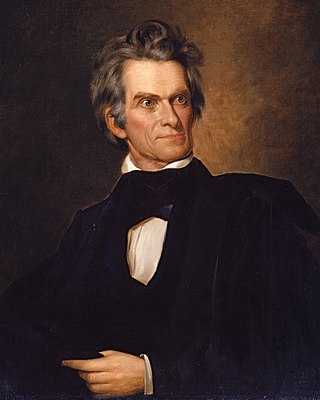
The Yellowstone expedition was an expedition to the American frontier in 1819 and 1820 authorized by United States Secretary of War John C. Calhoun, with the goal of establishing a military fort or outpost at the mouth of the Yellowstone River in present-day North Dakota. Sometimes called the Atkinson–Long Expedition after its two principal leaders, Colonel Henry Atkinson and Major Stephen Harriman Long, it led to the creation of Fort Atkinson in present-day Nebraska, the first United States Army post established west of the Missouri River, but was otherwise a costly failure, stalling near Council Bluffs, Iowa.
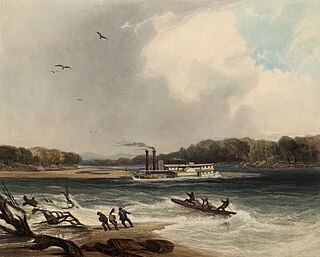
The steamboat Yellowstone was a side wheeler steamboat built in Louisville, Kentucky, for the American Fur Company for service on the Missouri River. By design, the Yellowstone was the first powered boat to reach above Council Bluffs, Iowa, on the Missouri River achieving, on her maiden voyage, Fort Tecumseh, South Dakota, on June 19, 1831. The Yellowstone also played an important role in the Texas Revolution of 1836, crossing the Texas Army under Sam Houston over the swollen Brazos River ahead of Santa Anna's pursuing Mexican Army.
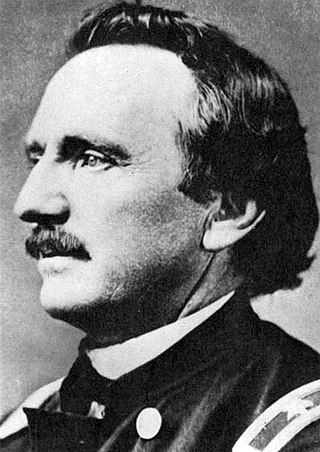
William Franklin Raynolds was an American explorer, engineer and U.S. army officer who served in the Mexican–American War and American Civil War. He is best known for leading the 1859–60 Raynolds Expedition while serving as a member of the U.S. Army Corps of Topographical Engineers.
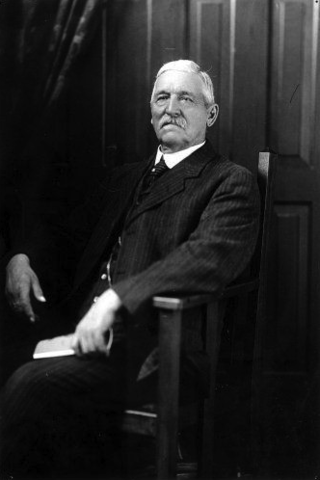
Grant Prince Marsh was a riverboat pilot and captain who was noted for his many piloting exploits on the upper Missouri River and the Yellowstone River in the Western United States from 1862 until 1882. He began working as a cabin boy in 1856, eventually becoming a captain, pilot, and owner in a career lasting over sixty years. During that time, he achieved an outstanding record and reputation as a steamboat captain, serving on more than 22 vessels. His piloting exploits became legendary and modern historians have referred to him as "possibly the greatest steamboat man ever", "possibly the greatest [steamboat pilot] ever", "possibly the finest riverboat pilot who ever lived", and "the greatest steamboat master and pilot on both the Missouri and Yellowstone Rivers".

Far West was a shallow draft sternwheel steamboat plying the upper Missouri and Yellowstone Rivers in the Dakota and Montana Territories, in the years from 1870 to 1883. By being involved in historic events in the Indian Wars of the western frontier, the Far West became an iconic symbol of the shallow draft steamboat plying the upper Missouri and Yellowstone Rivers in the era before railroads dominated transport in these areas.

Engineer Cantonment is an archaeological site in Washington County, in the state of Nebraska in the Midwestern United States. Located in the floodplain of the Missouri River near present-day Omaha, Nebraska, it was the temporary winter camp of the scientific party of the Yellowstone Expedition. From October 1819 to June 1820, the party studied the geology and biology of the vicinity, and met with the local indigenous peoples. Their eight-month study of the biota has been described as "the first biodiversity inventory undertaken in the United States".

Joseph Bijeau, also known as Joseph Bijeau dit Bissonet and Joseph Bissonet, was among the earliest fur trappers of the Rocky Mountains. He was a guide for Stephen Harriman Long's expedition of the Great Plains in 1820. A fur trapper and hunter, he lived among the Pawnee people. He was able to communicate to a number of Native American tribes through his use of sign language as well as the Crow language, which was used among a number of western tribes. After Spain lost the Mexican territory, trappers like Bijeau moved to Taos where they could trap, trade, and travel east without the hostilities that they experienced in the western United States.
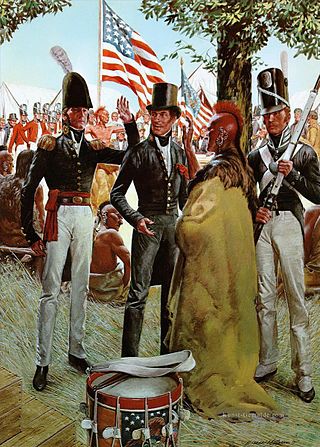
The Stephen H. Long Expedition of 1820 traversed America's Great Plains and up to the foothills of the Rocky Mountains. It was the first scientific party hired by the United States government to explore the West. Lewis and Clark (1803–1806) and Zebulon Pike (1805–1807) explored the western frontier but they were primarily military expeditions. A group of scientists traveled to St. Louis and on to Council Bluff (Nebraska) for the Yellowstone expedition of the upper Missouri River that would have established a number of military posts. The expensive effort was cancelled following a financial crash, steamboat failures, operational scandals, and negotiation of the Adams–Onís Treaty of 1819, which changed the border between New Spain and the United States. The scientists were reassigned to an expedition led by Stephen Harriman Long. From June 6 to September 13, 1820, Long and fellow scientists traveled across the Great Plains beginning at the Missouri River near present Omaha, Nebraska, along the Platte River to the Front Range, and east along the Arkansas and Canadian Rivers of Colorado and Oklahoma. The expedition terminated at Fort Smith in Arkansas. They recorded many new species of plants, insects, and animals. Long called the land the Great American Desert.
Samuel Seymour was a painter, engraver, and illustrator who documented Native American people and the scenery from expeditions of Stephen Harriman Long in 1819, 1820, and 1823. Some of the drawings captured new species of flora and fauna.


















